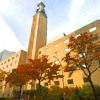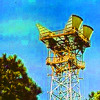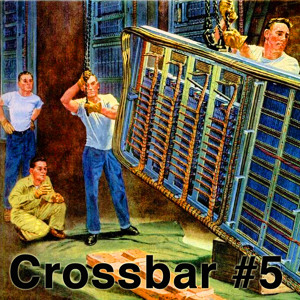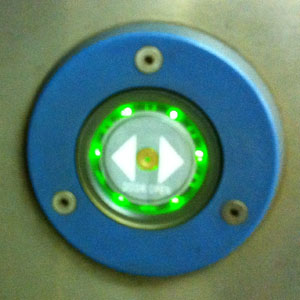 Today, every phone call you make sounds basically the same. However, back in the days of electromechanical switching, calls sounded quite different, depending on where you were calling, the type of local central office you were calling from, and the sometimes complicated route to get from one place to another.
Today, every phone call you make sounds basically the same. However, back in the days of electromechanical switching, calls sounded quite different, depending on where you were calling, the type of local central office you were calling from, and the sometimes complicated route to get from one place to another. This page has examples of various long distance calls, dialed from different types of local exchange equipment.
This page has examples of various long distance calls, dialed from different types of local exchange equipment.
Dialed from No. 5 Crossbar:

Crossbar 5 offices wait until the entire number has been dialed before advancing the call. After the last digit is received, you hear a very characteristic “ka-clunk” sound and then a moment of silence as the local central office forwards the number to its long distance gateway tandem.
Next, you hear the beautiful melody of Multi-Frequency (MF) tone signaling as the gateway tandem sends the destination number to the next switching point in the long distance network. Note that MF tone signaling differs in pitch and protocol from modern DTMF (a.k.a.: “Touch Tone”) dialing. Not all tandem offices sang such an audible song of MF tones, but when they did, it was delightful to hear!
What happens next will vary, depending on the route to the distant office, the kind of equipment along the way and at the distant office, among other things; that’s what makes them so much fun to listen to!
Jefferson, Georgia JFSNGAXA – Machine Intercept (featuring Jane Barbe)
This call goes to an unassigned number in a small exchange. An intercept recording, custom made by Jane Barbe specifically for this community, plays one time followed by a busy/reorder tone.
Auxvasse, Missouri AXVSMOXA – Semi-Automatic Intercept System
This call goes to an unassigned number in a small exchange and is answered by a local operator on the first ring. As the operator answers, an “intercept tone” plays alerting the operator that it’s an intercept call rather than just someone dialing zero.
The local operator connects the call to an intercept bureau, probably in a much larger city where an intercept operator interrogates the caller for the dialed number. The intercept operator keys in the number to a Semi-Automatic Intercept System which gives a mechanized report about the number. Finally, another intercept operator comes on the line, but then disconnects without doing anything.
Sparks, Nevada SPRKNV11 – Operator Intercept
This call rings once with an unusual ringback tone, but then it’s connected to an Intercept Concentrator with familiar “City Ring”. An Intercept Operator eventually answers and when given no number, disconnects the call.
Hagersville, Ontario HGVLON21 – Operator Intercept
When this call is connected, the first ring is followed by a sound affectionately known as “The Scrit” . It’s a tell-tale sign that the call is going to intercept.
On the third ring, the call advances to an intercept concentrator and the ringback tone changes to “City Ring”. The intercept operator manually looks up the status of the number and verbally reports to the caller about it.
Dialed from Panel:
Panel offices need help with billing on direct-dialed long distance calls, so they’re routed through a Centralized Automatic Message Accounting (CAMA) tandem. After the third digit is dialed, the Panel office begins setting up the connection and you can hear the characteristic “Panel Pulsing” as this happens. After the Panel office forwards the dialed number to the CAMA tandem, the subscriber’s number is identified via a brief, very high pitched tone. The call then proceeds under the supervision of the CAMA tandem to the Long Distance network.
Mont Laurier, Quebec MTLRPQXT – Ring to Answer
Evan probably wasn’t expecting someone to answer, but by disconnecting immediately, he avoided being charged for this call.
York, Pennsylvania YORKPAXM – Ringback Tone and Machine Intercept Recording
York, Pennsylvania is a Step-by-Step tandem, which makes it seem like forever before the call begins to ring. However, it often took calls to a very long time to complete when Step-by-Step equipment was involved.
